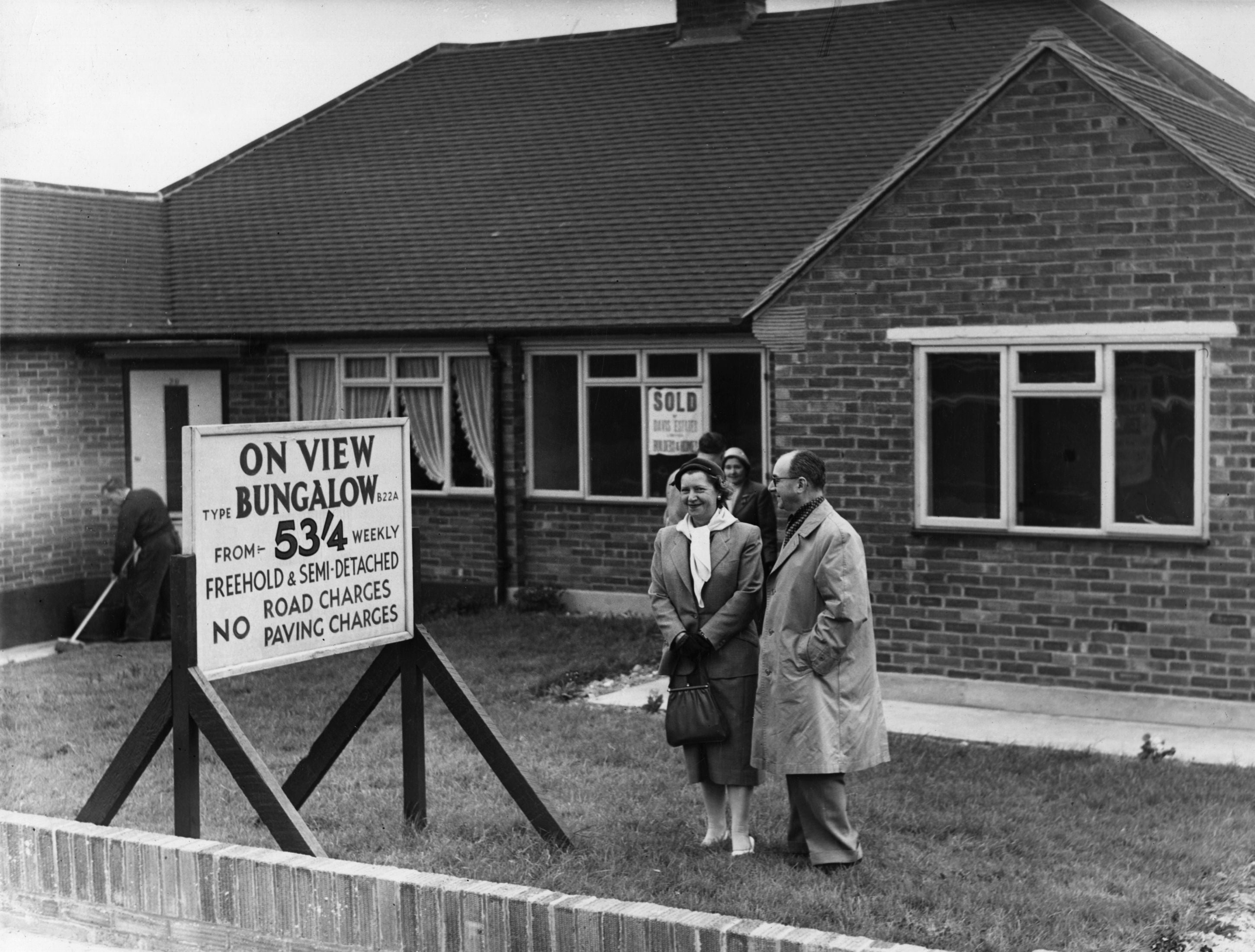Are bungalows really the solution to our housing crisis? The housing minister thinks so. And their design needn't leave you feeling flat
Single minded: many British bungalows formed dull cul-de-sacs in suburbia

Over the years, more than one politician has been damned as 'a bungalow' – as in “there’s nothing upstairs”.
Over the years, more than one politician has been damned as “a bungalow” – as in “there’s nothing upstairs”. And possibly that’s what people thought of the new Tory minister for housing and planning over his suggestion that we should all be “looking to love bungalows a little bit more”. But perhaps Brandon Lewis, who reckons we need more single-storey dwellings for older people, and that this in turn would free up houses for families, has a point.
Lewis says he wants to see more “quintessentially British” bungalows. As anyone who has ever done a pub quiz will know, the word “bungalow” comes from the Hindi “banglā” and describes a type of house from Bangladesh. The Indian Prime Minister lives in a bungalow at 7 Race Course Road in Delhi. But why get bogged down in the details. What about the idea – more bungalows for Britain?
“Why not – as part of a mix?” ponders the anonymous blogger Municipal Dreams. “When the great modernist architect Lubetkin designed the Cranbrook Estate for Bethnal Green Borough Council in the 1960s, he included every type of home – from tower block to terrace. He built 14 bungalows, set around a beautiful garden, for elderly residents. I’d love to see social housing providers given the means to provide a range of accommodation to meet all needs.”
For every Lubetkin bungalow, though, there are 1,000 more prosaic versions arranged around dull cul-de-sacs in the suburbs. But why can’t your nan have a snazzy single storey cake-baking den? The new Waterside retirement bungalows in County Durham look pleasant enough, and won an eco award from Friends of the Earth for their triple glazing and solar panels.
Britain’s cutest bungalows are the bodge jobs that sprang up at Peacehaven in Sussex and overlooking the Severn at Northwood near Bewdley in Worcestershire. These “plotlands” bungalows were cobbled together from corrugated iron and timber a century ago and look the perfect peaceful holiday home. There is a similar collection of sweet-natured bungalows – laid out, in neater rows, in the middle of the Grunewald Forest in West Berlin, below the broken domes of the old NSA listening station at Teufelsberg. After the Second World War, when Teufelsberg was being dreamt up, bungalows rescued many Britons from bombed-out homelessness. A collection of 16 prefab bungalows of the “Phoenix” type on Wake Green Road in Birmingham are now Grade II-listed. In Catford, south-east London, the prefabs of the Excalibur Estate are, conversely, threatened with demolition by Lewisham Council. A pop-up Prefab Museum tells the singular story of these single storeys – and it will open its doors again as part of London’s Open House architecture weekend on 20-21 September (openhouselondon.org.uk).
“In many ways, bungalows are ideal where land is available, not just for downsizing,” says Victoria Thornton, who organises Open House. “There’s great potential to design 21st-century bungalows which provide rooms all on one floor. Why is there this continual British obsession of going to bed ‘upstairs’ each night? The Scandinavians have been living in bungalows for years.”
According to Mariana Pestana, the Portuguese architecture exhibition curator: “Bungalows could be an interesting area to be researched in terms of a more flexible, sustainable alternative to the dominant housing models”. But she cautions that we can’t just design retro bungalows: “To take such research forward, it would be important to gather skilled contemporary designers. How can we think of the bungalow as a potential future housing typology if [we’re] using an architectural and social language of the past?”
But some bungalow designs are rather more modern. Arthur Witthoefft designed swish bungalows in the United States, where – like Australia – there’s more land and less British anti-bungalow snobbery. Mies van der Rohe’s showstopping Farnsworth House outside Chicago is technically a bungalow. And in Germany, Richard Neutra built Bewobau, a Palm Springs-themed modern bungalow village nicknamed “Kleine California” at Quickborn, near Hamburg.
Subscribe to Independent Premium to bookmark this article
Want to bookmark your favourite articles and stories to read or reference later? Start your Independent Premium subscription today.

Join our commenting forum
Join thought-provoking conversations, follow other Independent readers and see their replies